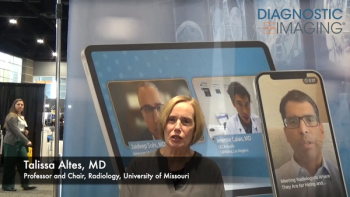
MIE unveils new computerfor legacy gamma cameras
Firm targets Siemens installed base The aging installed base of nuclear medicine gamma cameras representsa profitable niche for some companies that have made a businessout of keeping older cameras current. One such firm, MIE Americaof Elk Grove
Firm targets Siemens installed base
The aging installed base of nuclear medicine gamma cameras representsa profitable niche for some companies that have made a businessout of keeping older cameras current. One such firm, MIE Americaof Elk Grove Village, IL, is targeting legacy gamma cameras withits Scintron IV product, an acquisition and processing computerdesigned as a replacement for consoles still in use on equipment15 to 20 years old.
MIE America is the U.S. subsidiary of Medical Imaging Electronics,a German company that has been refurbishing gamma cameras in Europefor the past 15 years. MIE's U.S. unit debuted Scintron IV atthe Society of Nuclear Medicine meeting in June and submitteda 510(k) application for the product in the same month.
MIE has been selling the data acquisition and processing computerin Europe for the last three years. It opened a U.S. branch nearChicago last year, where staff are remanufacturing Siemens andGE gamma cameras. John Loebel, product manager for Scintron IV,said the computer has been installed and is operating at morethan 130 European university and private sites.
MIE America will sell Scintron IV as part of gamma camerasit remanufactures and as replacement consoles to the installedbase of obsolete nuclear medicine computer technology.
Initially, the Scintron IV will replace the Siemens DOT (digitaloperators terminal) and Siemens Scintiview consoles.
"Those are aging pieces of equipment, some more than 20years old," Loebel said.
MIE is expanding Scintron IV to interface with any of the othergamma cameras that may be in need of an updated computer system.
The company's primary competitor will be Medasys Digital Systemsof Atlanta, a gamma camera refurbisher and workstation vendorthat markets the Pinnacle series of computers. Many of MIE America'sstaff are ex-Medasys employees, Loebel noted.
MIE is bucking the trend toward off-the-shelf computers torun custom software, preferring to make use of proprietary architecturefor Scintron IV, which features Motorola 68000 series chips anda VME bus. The computer runs on an OS/9 operating system developedby Microware Systems in Des Moines.
Loebel said the custom-built computer is needed to get thehigh-speed parallel processing necessary in a multi-user/multi-taskingenvironment, characterized by simultaneous data acquisition, processingand image printing.
"The performance outweighs the additional costs of speciallymaking the computers," Loebel said.
Newsletter
Stay at the forefront of radiology with the Diagnostic Imaging newsletter, delivering the latest news, clinical insights, and imaging advancements for today’s radiologists.




























